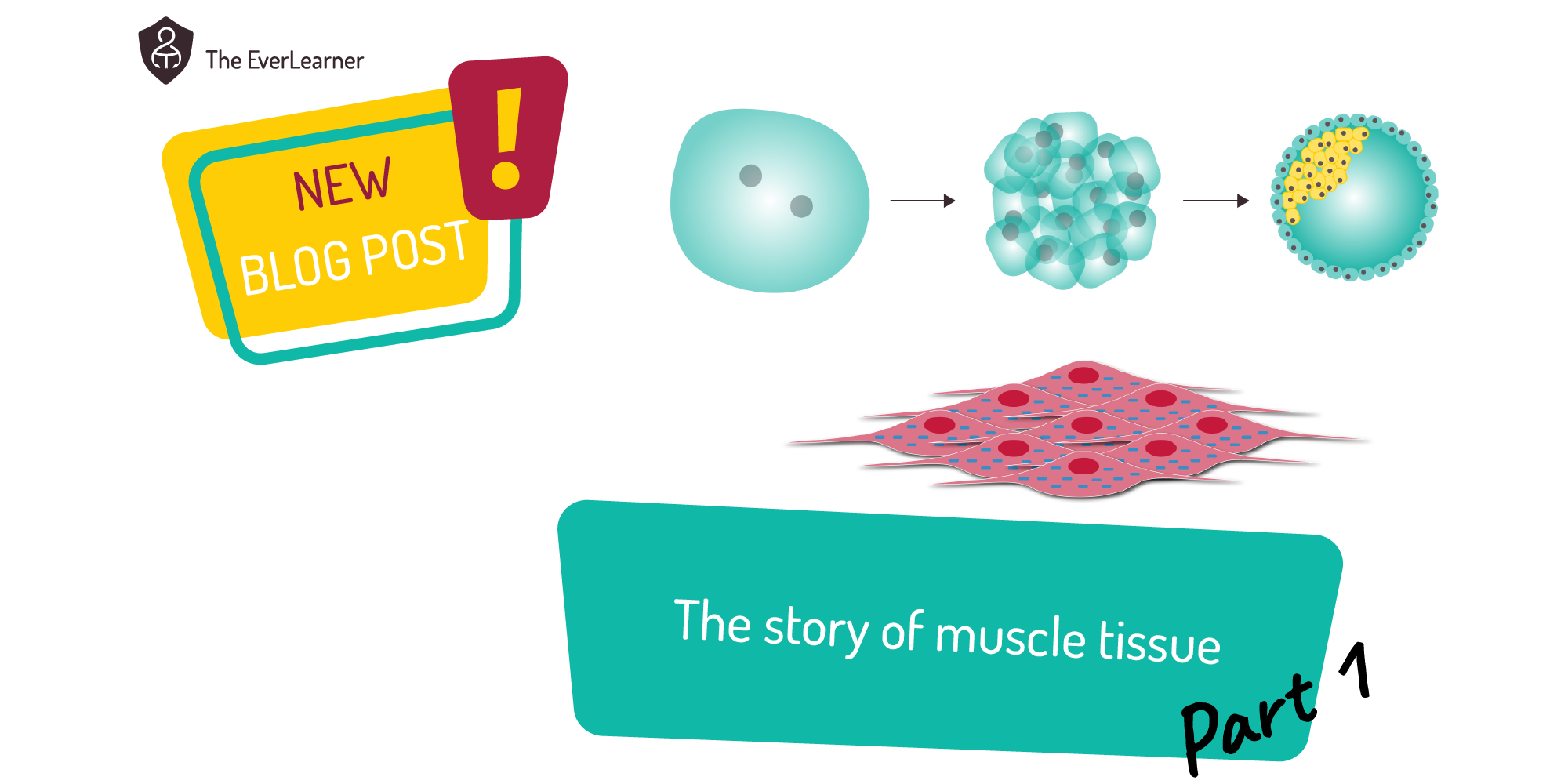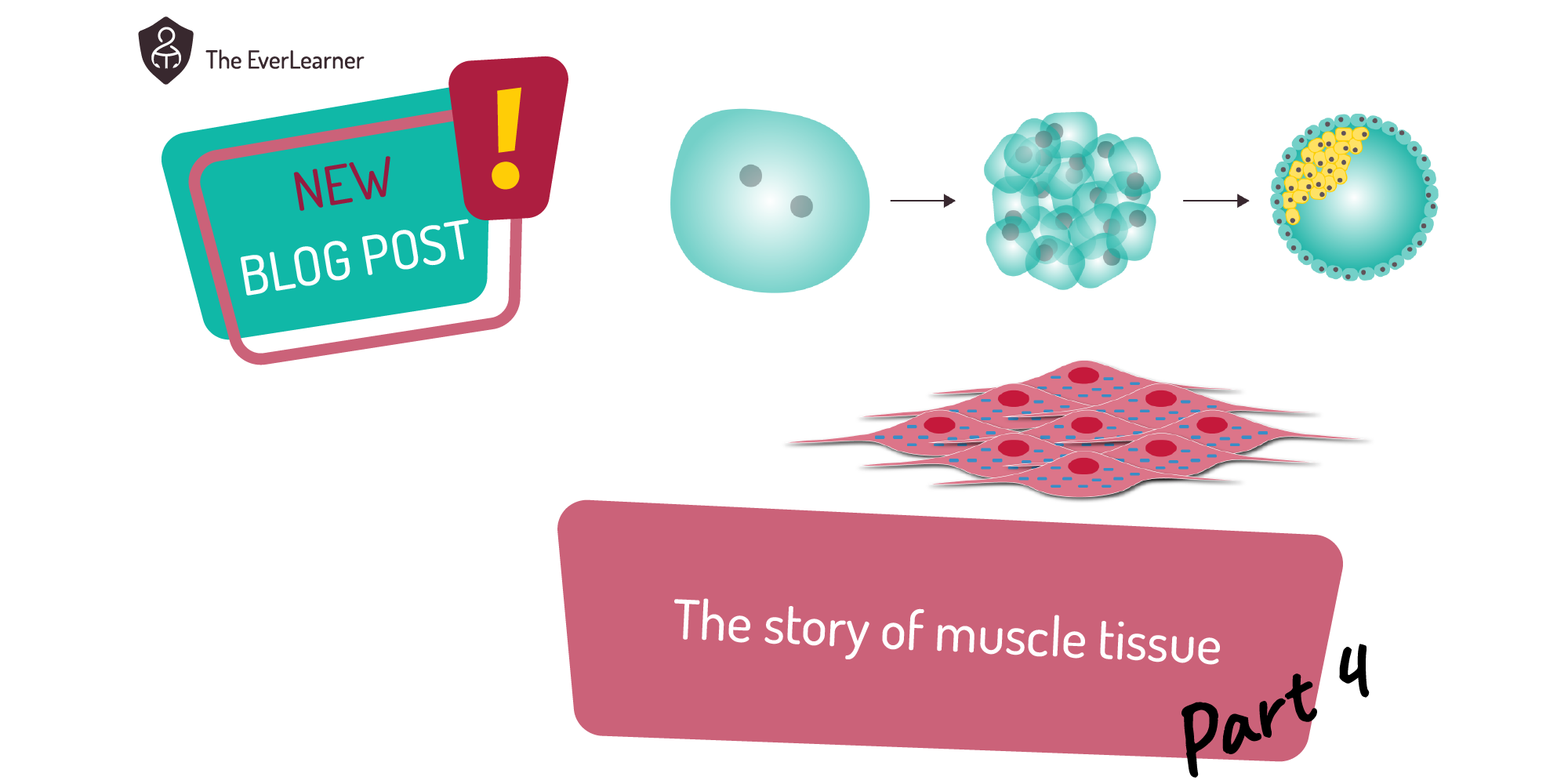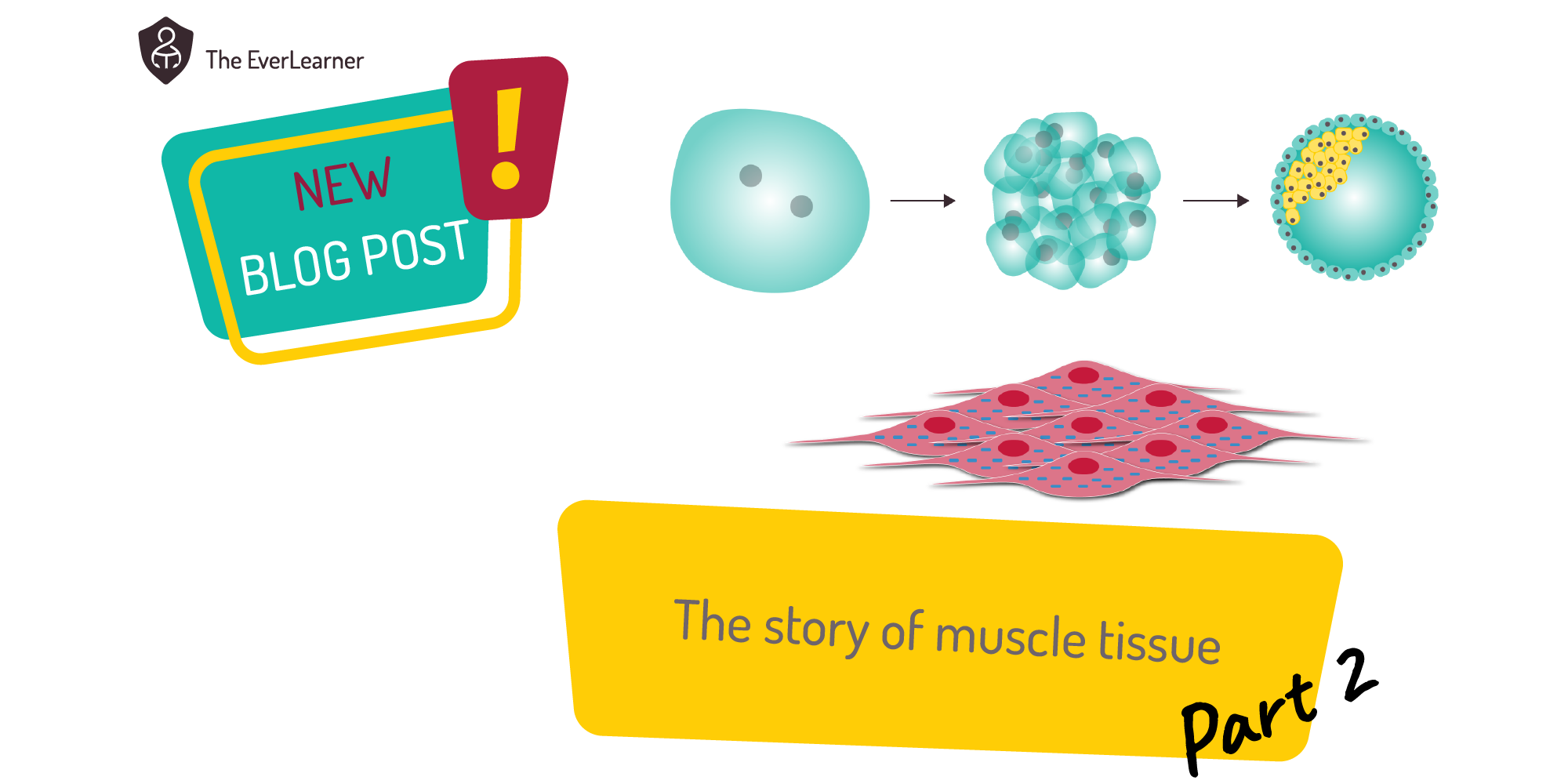The story of muscle tissue - Part 3
Dear PE teacher,
Now that we have got the nature of muscle tissue and the microscopic anatomy of it in the bag, we can start to address some of the classic topic applications.
As PE teachers, we are encouraged by our GCSE, A-level and BTEC qualifications to “jump into muscles” beyond the points of intuition. Therefore, before we get stuck into antagonistic pairs, fibre types and types of contractions, I want to remind you of two critical details about muscle tissue:
- Muscle tissue is capable of creating a pulling force only.
- Muscle tissue applies this pulling force in one direction only.
It is essential that students UNDERSTAND this BEFORE they study the topics I am going to address in this post. If they do not, they will be LIMITED to REMEMBERING the topics that, from their perspective, will have been covered (only) by their teacher. I am also going to argue here that students from early KS3 or even before, should learn these concepts as part of their core PE curriculum. Remembering that 'Physical' is a core part of physical education learning, having an intuition of muscle tissue is therefore a requirement of core learning experiences, in my opinion.
So, let’s get stuck in… Let’s look at understanding three critical applications for muscle tissue:
- Antagonistic Pairs
- Types of contraction
- Muscle fibre types
Antagonistic Pairs
Take a look at this image:

You’ll see that there are four muscles labelled. I invite you to ignore the deltoid and the pectorals (the fixators) which I’ll touch on briefly at the end of this story. This leaves us with the biceps (brachii) and triceps (brachii). These muscles are the antagonistic pair that operate at the elbow.
Let’s also remember that the biceps (brachii) and triceps (brachii) can only pull in one direction:
- The biceps (brachii) can ONLY pull upwards on the radius. This TENDS to cause flexion at the elbow.
- The triceps (brachii) can ONLY pull upwards on the point of the ulna (known as the olecranon). This TENDS to cause extension at the elbow.
Finally, before we apply these roles to a movement, we need to remember that if the biceps (brachii) and triceps (brachii) apply contractile force simultaneously, they will oppose one another, and if these forces produce an equal turning force (torque) at the elbow, the elbow will remain stationary in an isometric contraction.
Let’s apply this:

During the upwards phase of the biceps curl, the biceps (brachii) performs its role: it applies a pulling force upwards. This causes the movement of the dumbbell and the biceps (brachii) can be considered the agonist or prime mover. But, there’s a potential problem: any contraction of the triceps (brachii) will oppose the upwards (actually, better described as anti-clockwise) motion at the elbow. Therefore, the triceps (brachii) must perform its role and relax to allow the curl to happen. This makes the triceps (brachii) the antagonist.
Bicep curl - upwards phase
| Joint | Muscle | Role | Impact |
| Elbow | Biceps (brachii) | Agonist / Prime mover | Applies an anti-clockwise (upwards) turning force to the elbow. |
| Triceps (brachii) | Antagonist | Relaxes to ensure that it does not apply a clockwise (downwards) turning force to the elbow. This allows the curl to occur. |
So, assuming we have this clear, let’s look at another example, again at the elbow:

This is a wonderful example of the role of the triceps (brachii) during a throwing action. In order for that javelin to be propelled forwards and upwards, the triceps (brachii) must perform its contractile role. Here’s how:
Javelin throw - execution
| Joint | Muscle | Role | Impact |
| Elbow | Biceps (brachii) | Antagonist | Relaxes to ensure that it does not apply a clockwise turning force to the elbow. This allows the throw to occur. |
| Triceps (brachii) | Agonist / Prime mover | Applies an anti-clockwise turning force to the elbow. This causes elbow extension. |
In both examples, the muscle pair works antagonistically and in combination, to cause and allow the specific movement to occur. On a note of philosophy, the timings, sequencing and levels of contraction and relaxation become increasingly coordinated as performers develop skill. In fact, a significant proportion of what we consider to be a skillful movement is based upon these factors. Therefore, understanding antagonistic pairs is actually critical to coaching and learning skills and should be considered a clear synoptic link between anatomy, physiology and skill acquisition and learning.
Types of Contraction
Now, remember what you read above: muscle tissue can only pull in one direction. Therefore, I want to pose a question to you: Which muscle acts as the agonist/prime mover in the downwards phase of a biceps curl?

In most cases, when I ask students this, they will tell me triceps (brachii) because it causes elbow extension. They have a point, right? It seems to make sense. But, the issue here is that the weight of the dumbbell is already applying an anticlockwise turning force (torque). Therefore, as soon as the biceps (brachii) relaxes, that dumbbell is heading downwards (clockwise) fast! Moreover, if the triceps (brachii) contracts as an agonist, the elbow will accelerate clockwise and the dumbbell will be thrown down and the elbow will likely be injured.
This, of course, is not what happens in a gym. When we lower a dumbbell during a biceps curl, we have to use the biceps (brachii) to prevent rapid acceleration of the dumbbell. The biceps (brachii) acts as a brake and steadily lowers the dumbbell downwards.

The biceps (brachii) is still the agonist and the triceps (brachii) is still the antagonist but, this time, the nature of the biceps contraction is different:
Biceps curl - upwards phase
| Joint | Muscle | Role | Impact | Contraction type |
| Elbow | Biceps (brachii) | Agonist / Prime mover | Applies an anti-clockwise (upwards) turning force to the elbow. | Concentric |
| Triceps (brachii) | Antagonist | Relaxes to ensure that it does not apply a clockwise (downwards) turning force to the elbow. This allows the curl to occur. | None |
Biceps curl - downwards phase
| Joint | Muscle | Role | Impact | Contraction type |
| Elbow | Biceps (brachii) | Agonist / Prime mover | Applies an anti-clockwise (upwards) turning force to the elbow but only sufficient to steadily lower the dumbbell. | Eccentric |
| Triceps (brachii) | Antagonist | Relaxes to ensure that it does not apply a clockwise (downwards) turning force to the elbow. This allows the biceps brachii to control the movement of the elbow downwards. | None |
In our example, the biceps brachii has performed two actions:
- Upwards: Contracted concentrically.
- Downwards: Contracted eccentrically

If you look at this image above, there are considered to be two groupings of muscle contractions overall. These are isotonic contractions, when movement occurs at the joint and isometric contractions, when no movement occurs at the joint. So far, we have addressed isotonic concentric and isotonic eccentric contractions. So let’s look at isometric:
How would your intuition of this topic help you answer this question?

Hopefully, you will answer by saying that there needs to be equal turning force on each side of the joint and, therefore, both muscles need to apply force and that these forces need to produce an equal and opposite turning force. In other words, both muscles now act as an agonist because they are both contracting. In our example, the dumbbell is already applying a significant force, therefore the triceps (brachii) will only need to provide a modest controlling contraction, whilst the biceps brachii will need to oppose BOTH the downwards force of the dumbbell and that of the triceps (brachii) contraction. The biceps (brachii) will need to work pretty hard in comparison but both muscles will need to contract. This is what isometric contractions are. Once again, thinking about this philosophically, consider how important isometric contractions are to so many sports involving stillness. Think about sprint starts, arabesques, ski sits, judo holds etc… etc… etc… All of these owe their performances and even aesthetic qualities to isometric contractions.
Before leaving this section, I really want to stress that intuition is the key that unlocks the door of muscle contraction types. Once again, I return you to this intuition: muscles can only pull in one specific direction. This matters because without it, students cannot truly understand pairs of muscles and/or contraction types. The topics will remain aloof to them without it. Therefore, I argue that it is the responsibility of every PE teacher to ensure that all PE students, whether on a GCSE or BTEC course or not, understand this principle.
Muscle Fibre Types
I really, really try to avoid being negative in my writing but I am going to allow myself to be here. In my opinion, muscle fibre types is amongst the topics that are taught most poorly across the PE sector. Now, I probably can’t prove this to you and it is based on my feeling of the types of episodes I have seen, the types of questions I receive and also the general conversations I have with colleagues. We need to address this, hence me including muscle fibre types here. I have also written about this topic before as a common misconception for PE teachers.
We tend to teach the following “facts”:
- There are three types of muscle fibre - (FALSE)
- Different athletes have a set % of each fibre type - (FALSE)
We need to replace these inaccuracies with the following:
- There are endless numbers of different types of bundles of muscle fibres.
- All muscle fibres within a bundle are the same type.
- We can group each bundle into one of three muscle fibre type umbrella terms based on their characteristics along a series of continua.
This really matters, folks. Without this basic intuition, students cannot understand muscle fibre types. Even if we simply change the word type to classification, this would help.
Take a look here:

This is how we tend to teach fibre types, but I am arguing that we should do it something like this:

Notice that in this image, a classification could theoretically fall on one of the dashed lines and be some hybrid of different classifications. This is exactly correct. Furthermore, the properties of each bundle of fibres could be vertically a “little jagged” meaning that any bundle of fibres must be seen with a best fit mentality.
Once again, I remind teachers to recall what was addressed in Part 2 of this series:

I really enjoy getting this concept across to students because it is an unlocking concept. Once they understand this, the nature of training, recovery, spatial summation and wave summation and many other topics become easy to grasp. Therefore, I urge you to “teach this topic for intuition” and, whilst I fully anticipated that many classrooms going forward will include phrases such as “there are three types of muscle fibres…” I encourage you to be more accurate and to tantalise the learner by getting to the heart of the understanding.
So, I will leave Part 3 here and invite you to check-in next time when I write Part 4 and address the topic of “Muscle tissue as a Smart Device”.
Thanks for reading.
James
%20Text%20(Violet).png)


